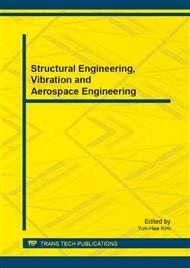p.292
p.297
p.302
p.311
p.317
p.322
p.326
p.331
p.335
Evolutionary Structural Optimization Using Material Efficiency Grades
Abstract:
In the evolutionary structural optimization (ESO) using the rejection ratio, the criterion of the inefficient material removal cant generally be lowered during the optimization process because the rejection ratio cant be decreased. Owing to this, some sorts of structures in special load cases cannot be optimized smoothly; or the late optimization of an ordinary structure is terminated suddenly when the removal of material abruptly increases excessively. The paper puts forward the Evolutionary Structural Optimization using Material Efficiency Grades (ESO-MEG) in order to eliminate the unfavorable effects of the rejection ratio on the results of ESO. The ESO-MEG can determine inefficient material in a structural optimization according to the efficiency grades of each part of material, so it can adjust timely and flexibly the criterion of inefficient material removal. The research shows that the ESO-MEG is applicable to the optimization of different sorts of structures in varying sorts of load cases, so generalization of this method has a broad prospect.
Info:
Periodical:
Pages:
317-321
Citation:
Online since:
December 2013
Authors:
Price:
Сopyright:
© 2014 Trans Tech Publications Ltd. All Rights Reserved
Share:
Citation:


